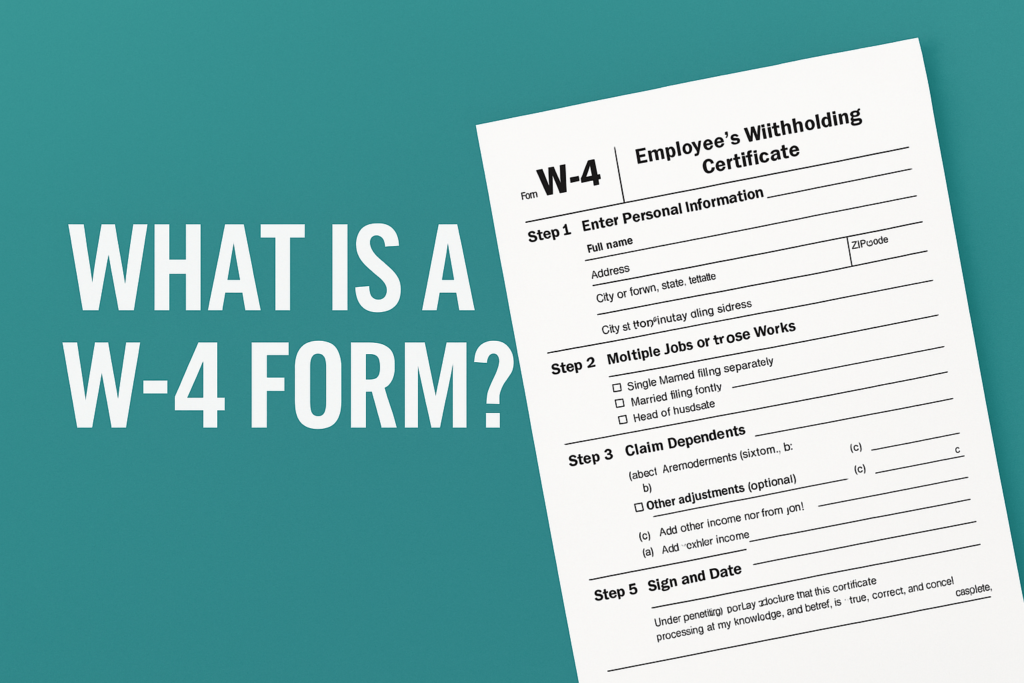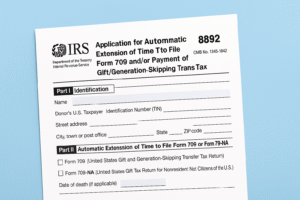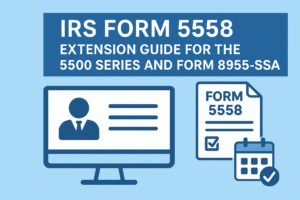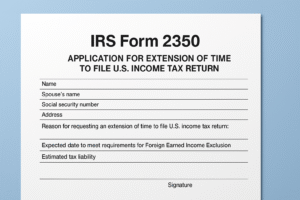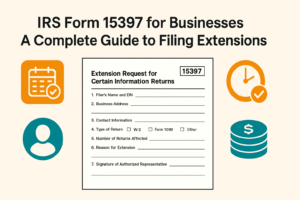As an employer, understanding tax documents like IRS Form W-4 is vital for smooth onboarding and compliant payroll practices. A W-4 form might seem like just another piece of paper in the hiring process, but it plays a major role in determining how much federal income tax is withheld from an employee’s paycheck. From legal requirements to practical guidance, this article walks you through everything employers need to know about the W-4.
What Is a W-4 Form?
Form W-4, officially titled the Employee’s Withholding Certificate, is a federal form that new employees fill out when starting a job. It instructs employers on how much federal income tax to withhold from the employee’s wages based on personal financial details.
Unlike payroll taxes such as Social Security or Medicare (which are fixed percentages), federal income tax withholding varies. The W-4 helps tailor withholding to the employee’s circumstances, aiming to prevent them from overpaying or underpaying taxes during the year.
What Is a W-4 Form Used For?
Form W-4 serves several important purposes:
- Calculating tax withholding: Based on inputs like marital status, number of dependents, and additional income.
- Updating tax information: Employees can submit a new form whenever their financial or family situation changes.
- Ensuring compliance: Employers are required to withhold the correct amount of tax; the W-4 ensures they do so accurately.
In essence, this form helps avoid unpleasant surprises—such as a large tax bill or unexpected refund—at the end of the year.
W-2 vs. W-4 Forms: What Is the Difference?
Understanding the difference between W-2 and W-4 forms is essential:
| Aspect | W-2 Form | W-4 Form |
| Purpose | Reports total wages and taxes withheld | Guides how much federal tax to withhold |
| Completed By | Employer | Employee |
| Submission | Sent to IRS, SSA, and employee | Given to employer; not sent to IRS |
| Timing | At year-end | At hiring or when personal info changes |
| Use Case | Tax return filing and record keeping | Tax withholding estimation |
In summary: the W-4 sets the rules, and the W-2 shows the result.
Who Needs To Fill Out a W-4 Form?
Every employee who will be paid wages that are subject to federal income tax withholding must fill out a W-4. This includes:
- Full-time and part-time employees
- Temporary or seasonal workers
- Rehired employees (especially if previous W-4 is outdated)
The W-4 should also be updated if the employee:
- Gets married or divorced
- Has a child or dependent
- Starts or ends a second job
- Experiences a significant income or deduction change
How To Fill Out a W-4 Form as an Employer
While employers don’t fill out the W-4 on behalf of employees, they are responsible for managing it properly. Here’s what employers need to do:
- Distribute the W-4: Provide the most current IRS version to all new hires.
- Collect and Review: Ensure the form is complete and signed.
- Input Data into Payroll System: Use the form to configure the employee’s withholding.
- Store the Form: Keep each W-4 on file for at least four years.
- Respect Confidentiality: W-4 data is sensitive—handle with care.
- Process Updates Promptly: When an employee submits a new W-4, update their records before the next payroll cycle.
How To Help Employees Fill Out a W-4
Step-by-Step Breakdown
Step 1: Enter Personal Information
- Full name, Social Security number, and address.
- Filing status: choose one of the following:
- Single or Married Filing Separately
- Married Filing Jointly
- Head of Household
Step 2: Multiple Jobs or Spouse Works
- If the employee has more than one job or their spouse works:
- Use the IRS Tax Withholding Estimator (recommended).
- Or, check the box if there are only two jobs.
- Or, fill out the Multiple Jobs Worksheet on page 3.
Step 3: Claim Dependents
- For income under $200,000 ($400,000 for married couples), employees can claim:
- $2,000 per child under age 17
- $500 for other dependents
Step 4: Other Adjustments (optional)
- Report additional income not from jobs (e.g., dividends, retirement).
- Claim deductions beyond the standard deduction.
- Request additional withholding per paycheck.
Step 5: Sign and Date
- The form must be signed and dated to be valid.
- Unsigned forms should not be processed.
When Must All W-4 Information for an Employee Be Entered?
W-4 information should be entered into the payroll system before processing the employee’s first paycheck. Prompt processing ensures accurate withholding from the beginning. The IRS allows up to 30 days to implement changes from a new W-4, but ideally, updates are made immediately.
What if No W-4 Form Is Filled Out?
If an employee fails to submit a W-4:
- The employer must withhold tax as if the employee is single with no adjustments—resulting in the highest withholding amount.
- The employee remains in this default withholding status until a completed W-4 is submitted.
Is Form W-4 for State or Federal Taxes?
Form W-4 is specifically for federal income tax withholding.
For state income tax withholding, separate state-specific forms are usually required. Each state sets its own rules, exemptions, and form requirements, which we’ll cover in detail shortly.
Is Form W-4 Only for Full-Time Employees?
No. Any employee earning wages subject to federal income tax must complete a W-4, regardless of their employment status. This includes:
- Part-time workers
- Temporary or seasonal hires
- Interns (if paid)
Who Should Adjust Their Form W-4?
Employees should consider submitting a new W-4 if:
- They get married or divorced
- They have a baby or adopt a child
- Their income increases or decreases
- They start or stop a second job
- They expect to claim significant deductions or credits
Regularly updating the W-4 helps align tax withholding with actual liability, avoiding tax time surprises.
How To Adjust a Form W-4
- Obtain the latest W-4 from the IRS website.
- Complete the form based on the new information.
- Submit it to the employer’s payroll or HR department.
- The employer should update the payroll system as soon as possible, preferably before the next payroll run.
How To Claim Exemption From Income Tax Withholding
To claim an exemption:
- The employee must meet both conditions:
- Owed no federal income tax last year.
- Expects to owe none this year.
- On the W-4:
- Write “Exempt” in Step 4(c).
- Complete Steps 1(a), 1(b), and 5 (signature/date).
- A new exemption W-4 must be submitted every year by February 15.
If not submitted on time, the employer must revert to the standard withholding rules.
Does the W-4 Form Have an Impact on FICA Taxes?
No. The W-4 form does not affect FICA taxes. Social Security and Medicare taxes are withheld based on fixed percentages, regardless of filing status or exemptions:
- Social Security: 6.2% (up to annual wage limit)
- Medicare: 1.45% (+0.9% for high earners)
W-4 only affects federal income tax withholding.
Does a W-4 Need To Be Filled Out Every Year?
Generally, no. Once submitted, the W-4 remains in effect until the employee chooses to update it—unless:
- They claimed “Exempt” status (must renew annually).
- The IRS requests a new form due to a discrepancy.
- The employer initiates a company-wide W-4 update due to policy changes.
What if Employees Can Claim Exemption From Withholding?
If an employee qualifies for exemption, employers must:
- Honor the exemption and withhold no federal income tax.
- Still withhold FICA and state/local taxes (if applicable).
- Require a new W-4 every year by February 15 to maintain exempt status.
If the deadline is missed, revert to standard withholding.
Should Employees Update W-4 After Getting Married?
Yes. Marriage changes filing status and often household income. Newly married employees should:
- Revisit their filing status (joint or separate).
- Update dependent information if they now have stepchildren.
- Consider using the IRS withholding estimator to find the right balance.
Can Employees Declare Themselves Exempt From Withholding?
Yes, but only if they meet IRS guidelines. Misusing this option can result in tax underpayment and IRS penalties. Employers should not question the claim but should ensure the form is completed correctly.
When Not To Fill Out a Form W-4
There’s no situation where employees are prohibited from filling out a W-4, but they shouldn’t fill it out carelessly. For example, claiming “Exempt” when not eligible can cause serious tax issues.
How Long Does It Take for a Form W-4 To Go Into Effect?
Per IRS guidelines, a new or updated W-4 should be implemented by the start of the first payroll period ending 30 days after the form is received. Most employers update it within one or two pay periods for accuracy.
State Tax Withholding Forms
While Form W-4 handles federal tax withholding, each state has its own rules. Many require a separate state withholding form, while others have no income tax at all.
States With Their Own Withholding Forms
| State | Form Name |
| Alabama | A-4 |
| Arizona | A-4 |
| Arkansas | AR4EC |
| California | DE 4 |
| Colorado | DR 0004 |
| Connecticut | CT-W4 |
| Delaware | W-4DE |
| District of Columbia | D-4 |
| Georgia | G-4 |
| Hawaii | HW-4 |
| Idaho | ID-W4 |
| Illinois | IL-W-4 |
| Indiana | WH-4 |
| Iowa | IA W-4 |
| Kansas | K-4 |
| Kentucky | K-4 |
| Louisiana | L-4 |
| Maine | W-4ME |
| Maryland | MW507 |
| Massachusetts | M-4 |
| Michigan | MI-W4 |
| Minnesota | W-4MN |
| Mississippi | 89-350 |
| Missouri | MO W-4 |
| Montana | MW-4 |
| Nebraska | W-4N |
| New Jersey | NJ-W-4 |
| New Mexico | A-4 |
| New York | IT-2104 |
| North Carolina | NC-4 |
| North Dakota | NDW-R |
| Ohio | IT 4 |
| Oklahoma | OK-W-4 |
| Oregon | OR-W-4 |
| Pennsylvania | REV-419EX |
| Rhode Island | RI W-4 |
| South Carolina | SC W-4 |
| Utah | Uses federal W-4, with guidance |
| Vermont | W-4VT |
| Virginia | VA-4 |
| West Virginia | WV/IT-104 |
| Wisconsin | WT-4 |
States With No State Income Tax (No Form Required)
These states do not require income tax withholding:
- Alaska
- Florida
- Nevada
- South Dakota
- Tennessee
- Texas
- Washington
- Wyoming
Final Thoughts
Form W-4 might seem straightforward, but it’s crucial for ensuring accurate payroll and helping employees avoid tax-time surprises. Employers should not only collect and store these forms properly but also understand how to assist employees when needed.
By staying informed on both federal and state withholding requirements, employers protect their business and support their employees’ financial well-being.

